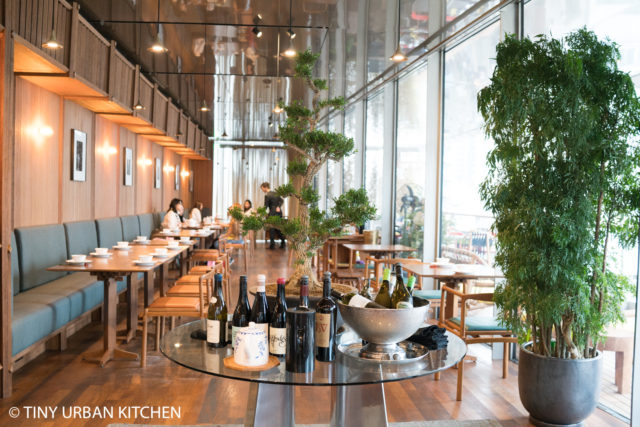
Old Bailey Hong Kong
Inside Tai Kwun, the former prison and police station remodeled into a newly opened center of the arts, is a new Jiangnan restaurant called Old Bailey Hong Kong. The newest restaurant from the JIA Group (also behind well-known great restaurants such as Duddell's, 22 Ships, Ham & Sherry), Old Bailey represents the old Jiangnan idea that instead of going out, people would go to each others' homes and enjoy meals "diligently sourced and prepared by private chefs."
Dining at Old Bailey is meant to embody those concepts. The space has been carefully designed by Basel-based architects Herzog & de Meuron together with Hong Kong partners Adonian Chan (Trilingua), Mina Park (Sook) and Nana Chan (Teakha), to evoke the warmth of a home with furniture inspired by the Ming Dynasty.
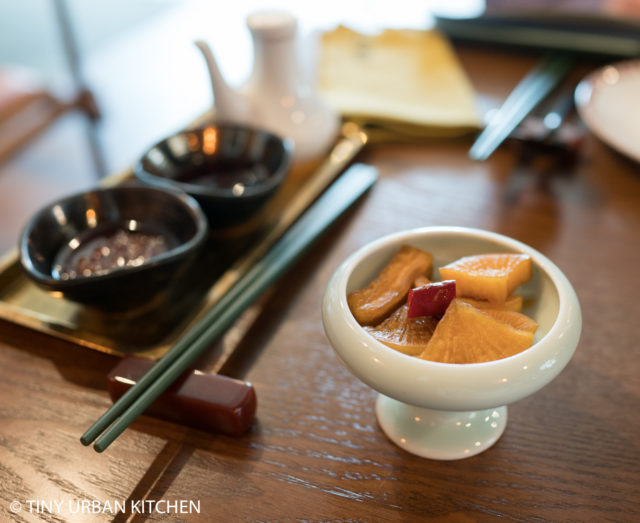
Ingredients are most certainly "diligently sourced." 80% of the restaurant's vegetables are organic and their pickles and fermented condiments are made in-house. They source from a network of artisan producers for their noodles, vinegars and beancurds. They are very aware of dietary restrictions. Menu items are marked as being vegan, vegetarian, or gluten-free, for example.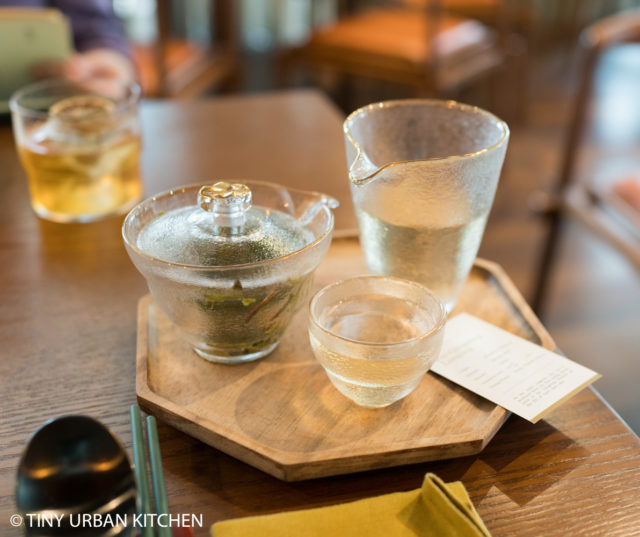
The selection of teas is excellent. We both decided to try the Pre-Qingming Longjing green tea from Hangzhou, Zhejiang, China. This fresh, grassy tea is produced from the first spring shoots prior to the Qingming Festival on the 5th of April each year. [HKD100 per person] The fresh leaves only need to be steeped for about 1-2 minutes before the tea is ready. By giving us three cups, we were able to control the steeping of our own tea (or they could come by and do it for us if they were around).
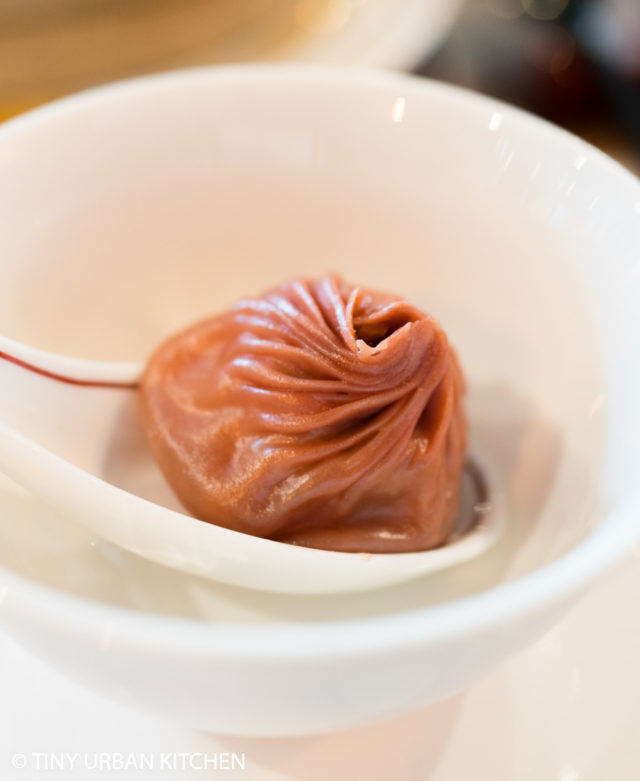
We started with Mala xiaolongbao [4 pieces HKD98], a spicy Ibérico pork soup dumpling, which was fantastic. The dumpling was exploding with flavor without being overwhelmingly spicy or salty. I especially appreciated the fact that I could really taste the Sichuan peppercorns, not just pure hot chili spice.
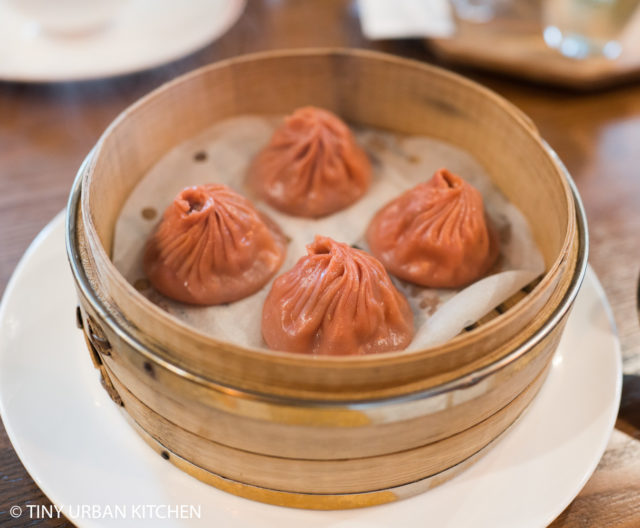
How are these soup dumplings made? Sichuan peppercorns, spices, and pork broth are gelatinized and cut into cubes. Ground pork, yellow rice wine, soy sauce, and grated ginger, are then mixed for the filling. After being wrapped (in a beet-colored red skin), the dumplings are steamed for 15 minutes.
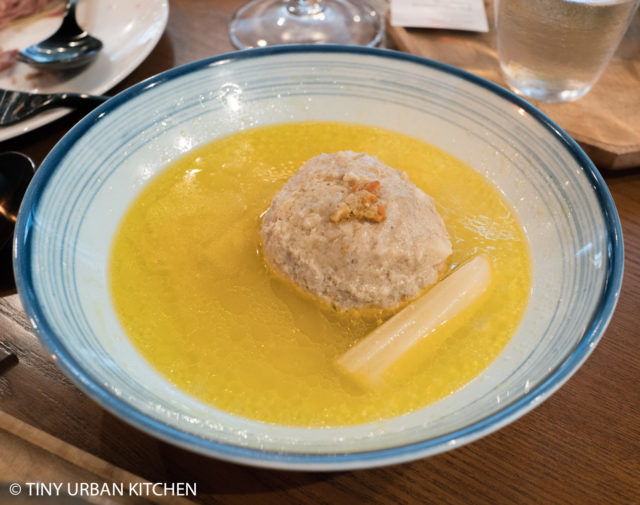
Going back as far as the Sui Dynasty, lion’s head is a dish that some say is over 1,400 years old. The Hairy Crab Roe Lion’s Head at Old Bailey Hong Kong consists of French organic pork collar-butt and fatty pork, hairy crab roe, and ginger. The meatballs are cooked in a mixture of soy sauce, dark soy sauce, and Huadiao wine.
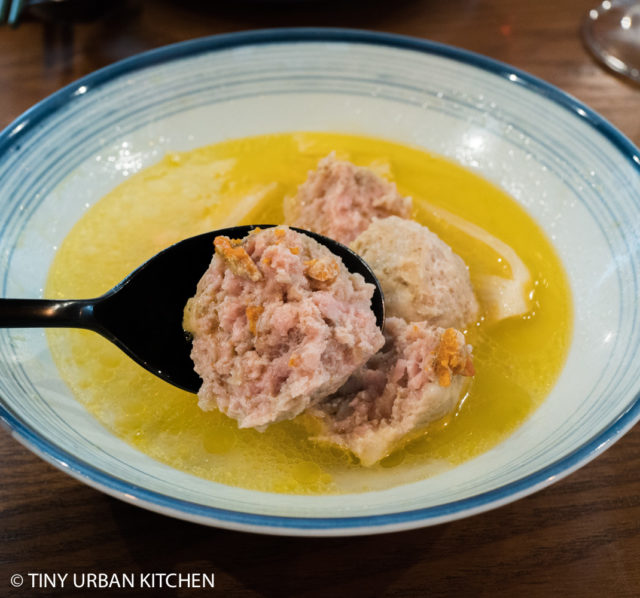
These meatballs were insanely soft and tender. Perhaps the proper mix of meats was the magic bullet. Furthermore, I was really amazed at how flavorful these meat balls were. They were stunning. Even the golden soup was delicious, full of hairy crab flavor. [HKD198 each]
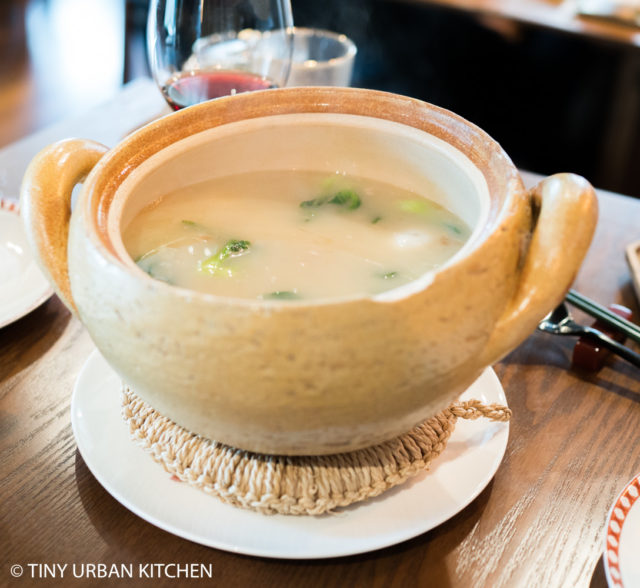
One of the highlights of the meal was one of the restaurant's many signature soups, the Supreme Hangzhou Duck Soup made with Jinhua ham and hand-pounded fish balls.
Hanghzou’s fish balls are famous for their delicate lightness and how they capture the flavors of the broth. This pillowy softness cannot be perfected by machine. Old Bailey adopts the traditional way and makes these fish balls by hand every morning. In fact, so much preparation goes into this soup before it ever reaches the table, which probably explains it's expensive price.
For the fish balls, the meat from river fish (grass carp) is first deboned and pounded to a pulp. Egg white, salt, and ginger juice are then added to the fish meal and squeezed through fingers in order to form balls. The spheres are boiled in warm water and then served in a duck broth made by double boiling 18-month old duck, Jinhua ham, bamboo shoots, and reed leaves.
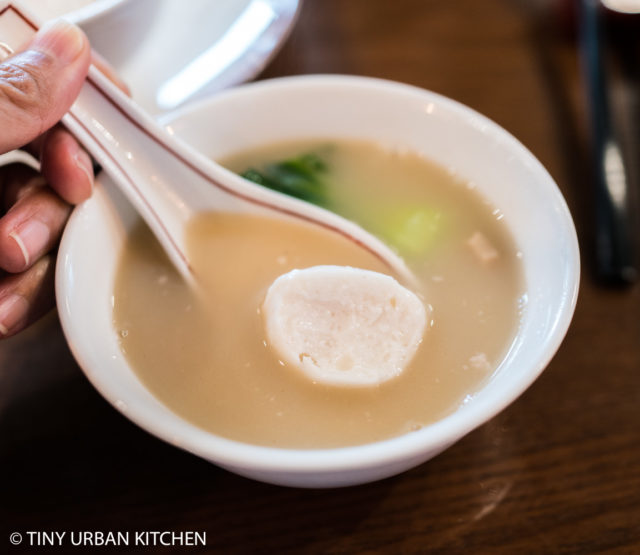
The overall dish was phenomenal and totally blew us away. Bryan immediately declared "this is the best fish ball I have ever eaten." It's so soft, so unlike the denser versions we usually see. Similarly, the soup was thick, creamy, and deeply full of flavor, both from the double boiled duck and the intensely flavorful Jinghua ham.
Even though we were extremely full, we couldn't help but get second helpings of the food. We had ordered the smaller order (HKD398 for a half, serve 4-6 persons) and was able to take some home to enjoy the next day at lunch.
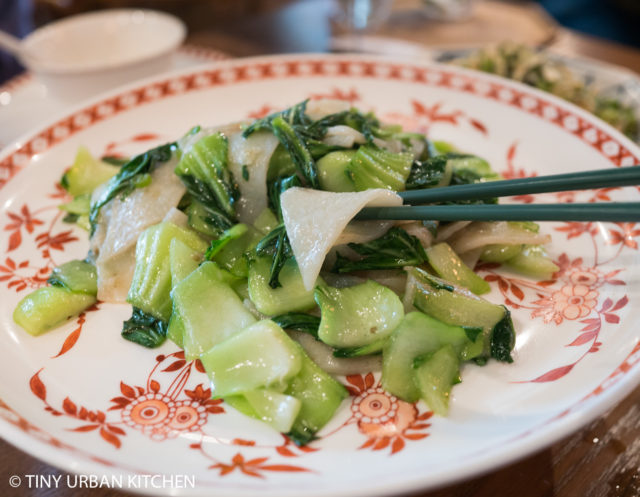
We really enjoyed the humble dish called Village-style Housemade Handkerchief Pasta with organic seasonal greens [HKD148]. This simple dish consists of only two ingredients: fresh "mianpi" noodles and vegetables. The dough consists only of flour, salt, and water, and is kneaded, flattened, and then pan-fried with the fresh greens.
Executive Chef Wong Kwan Man fondly remembers this from his childhood and recreated from memory without any recipes. For something so seemingly basic, it's surprisingly flavorful and addictive (love those flat "handkerchief" pasta sheets).
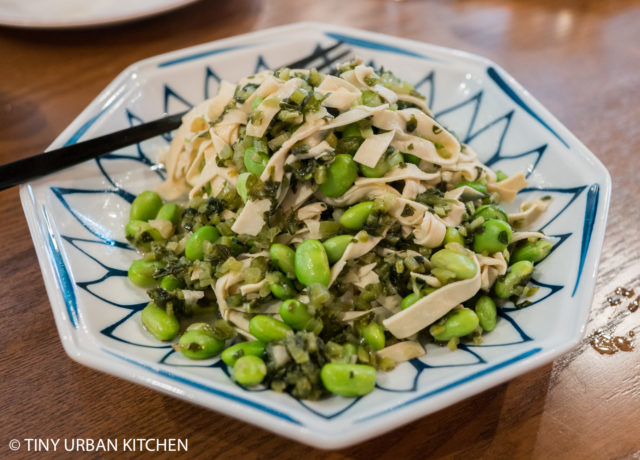
They were sold out of the dish we wanted, fresh sauteed peas, so we instead opted for a very classic Jiangnan dish, sautéed fresh Soybean, Bean Curd Knot, Preserved Mustard Green [HKD138]. The dish was very good, though it did not blow us away like the other dishes did.
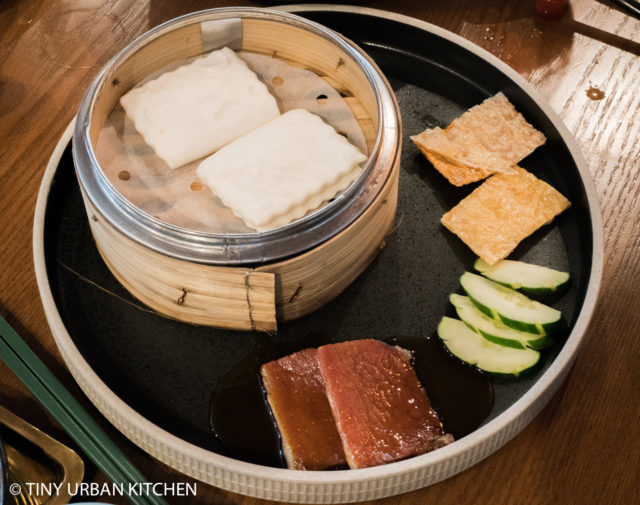
In China, Jinhua ham is highly regarded, well-known, and has a long, long history (since the Tang Dynasty 618–907 AD). Some compare it to Iberico jam in Spain, sharing certain deeper umami flavors due to long curing times, though they are certainly quite different in a lot of ways.
Our next course involved a 36-month ham from Jinhua, Zhejiang, which was slice, pressed, and steamed with house-made Osmanthus honey syrup. It came with crispy bean curd sheets from local artisanal producer Shu Kee, fresh cucumbers, and soft mantou buns.
The crispy bean curd sheets were made by gluing five bean curd sheets together with shrimp paste by hand.
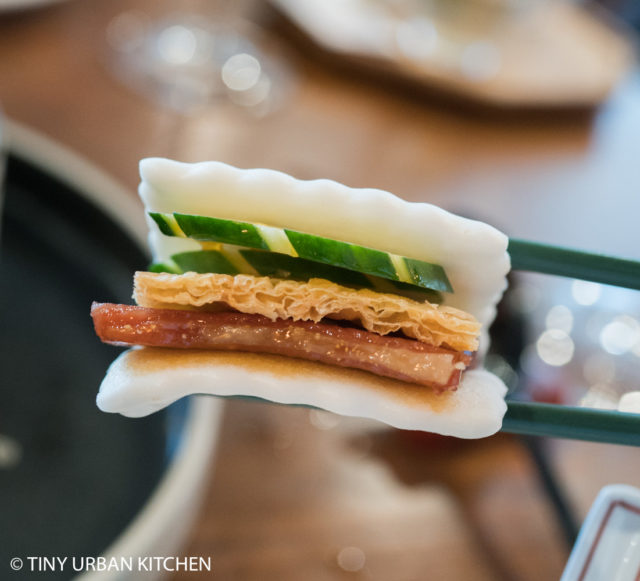
To make a "sandwich", grab a steamed "mantou" bun, put inside a piece of ham, cucumber, and tofu sheet. Enjoy!
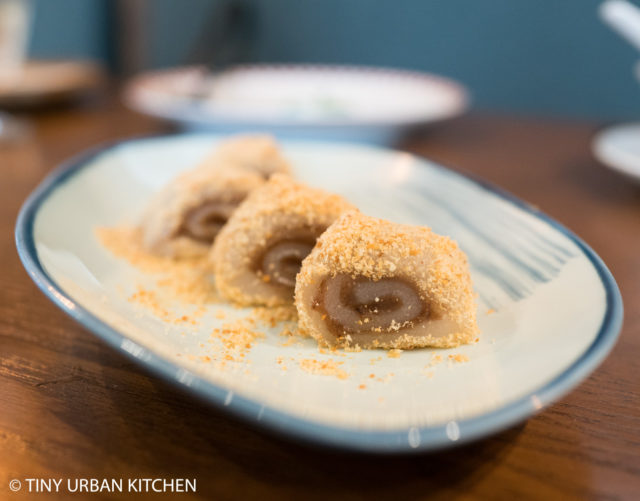
For dessert, the server highly recommended the Rolling Donkey, glutinous rice cake, rolled with red bean paste, toasted peanut. [HKD48 (vegan)] It had a nice chewy texture and was pleasantly light and not too sweet.
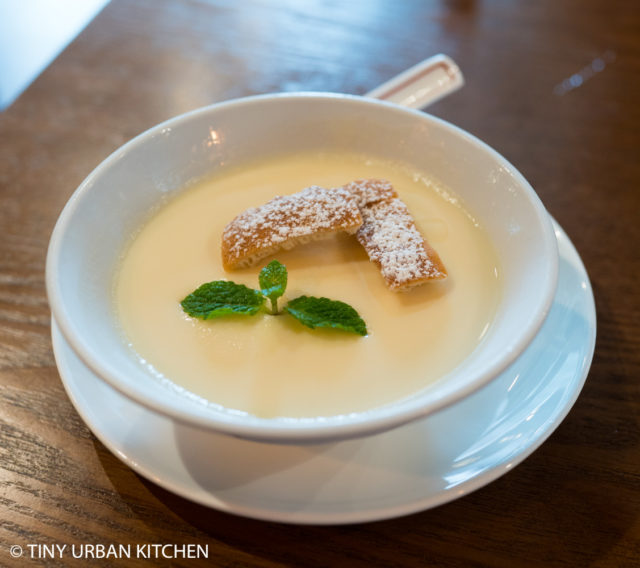
We also tried the Organic Soymilk Pudding [HKD48] which tasted like a cross between tofu pudding [豆花] and creme brulee.
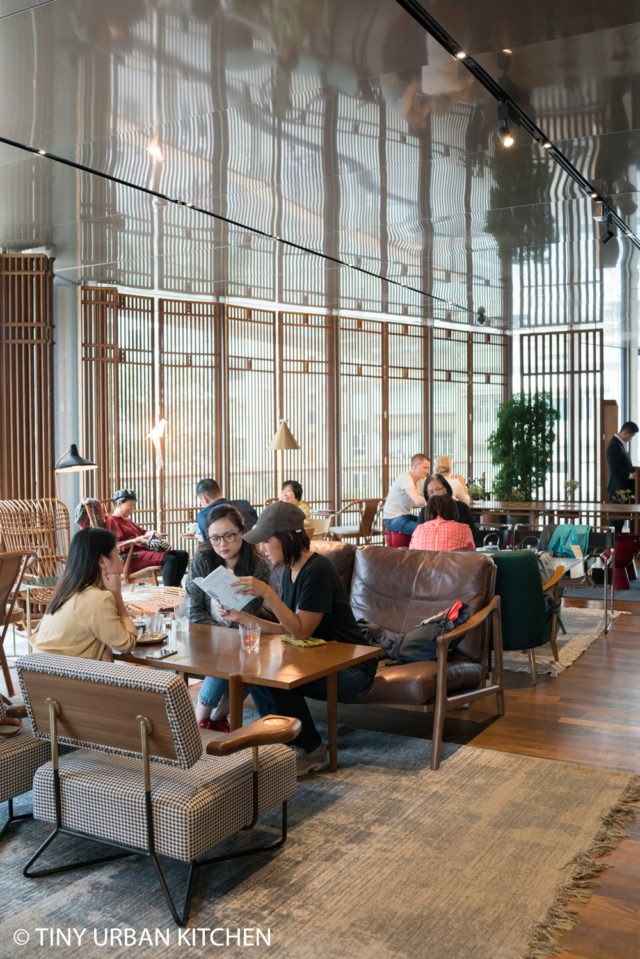
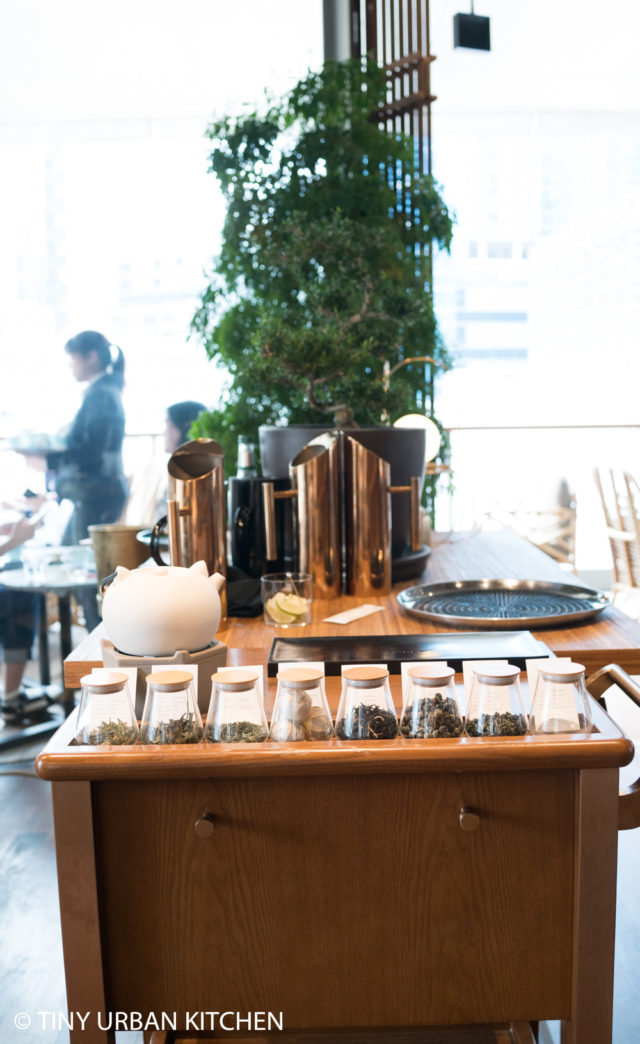
Old Bailey Hong Kong - General Thoughts
I really, really enjoyed our meal at Old Bailey. It's unusual to think that virtually every dish you ordered was excellent, but I really felt that way at Old Bailey. True, we mostly ordered dishes that they highlighted as their best dishes, but still, usually not every single one turns out to be so amazing. We absolutely LOVED the Hanzhou Fish Ball Duck Soup, Village-style Housemade Handkerchief Pasta, the Mala Xiaolongbao, and the Lion's Head Meatball.
The space is beautiful and the overall ambiance is really relaxing and pleasant. There are still so many incredible-looking dishes on the menu. I can't wait to go back.
Old Bailey Hong Kong
2/F, JC Contemporary, Tai Kwun
10 Hollywood Road, Central, 2877 8711
Disclaimer: I was invited to dine here and I did not pay for my meal. I was not paid to write this post. All opinions are my own.
This is the fifth post in the updated #50Postsin50Days - Take 2 Challenge. Other posts in this series will be added to the bottom of the original post.










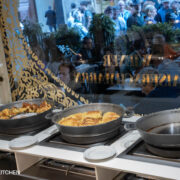
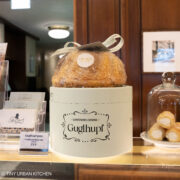

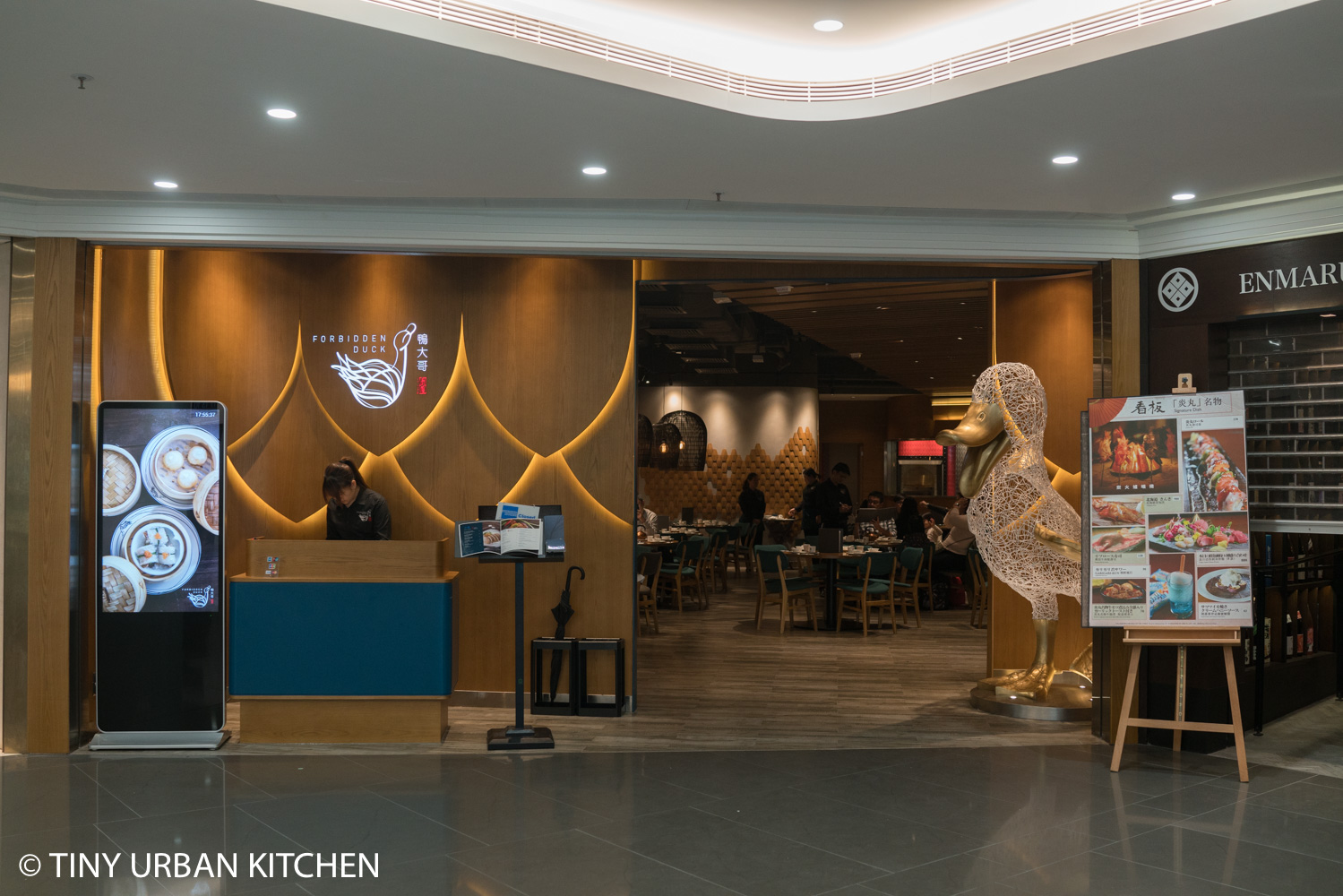
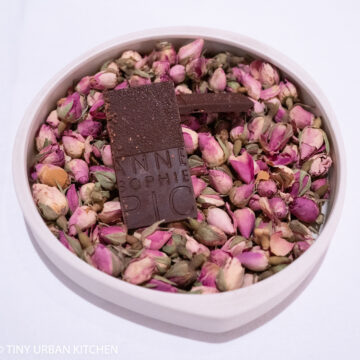
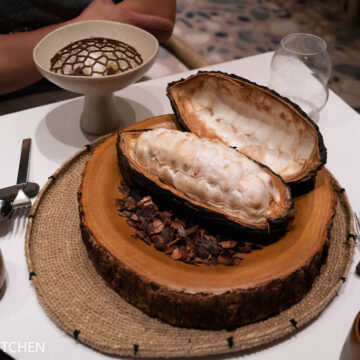
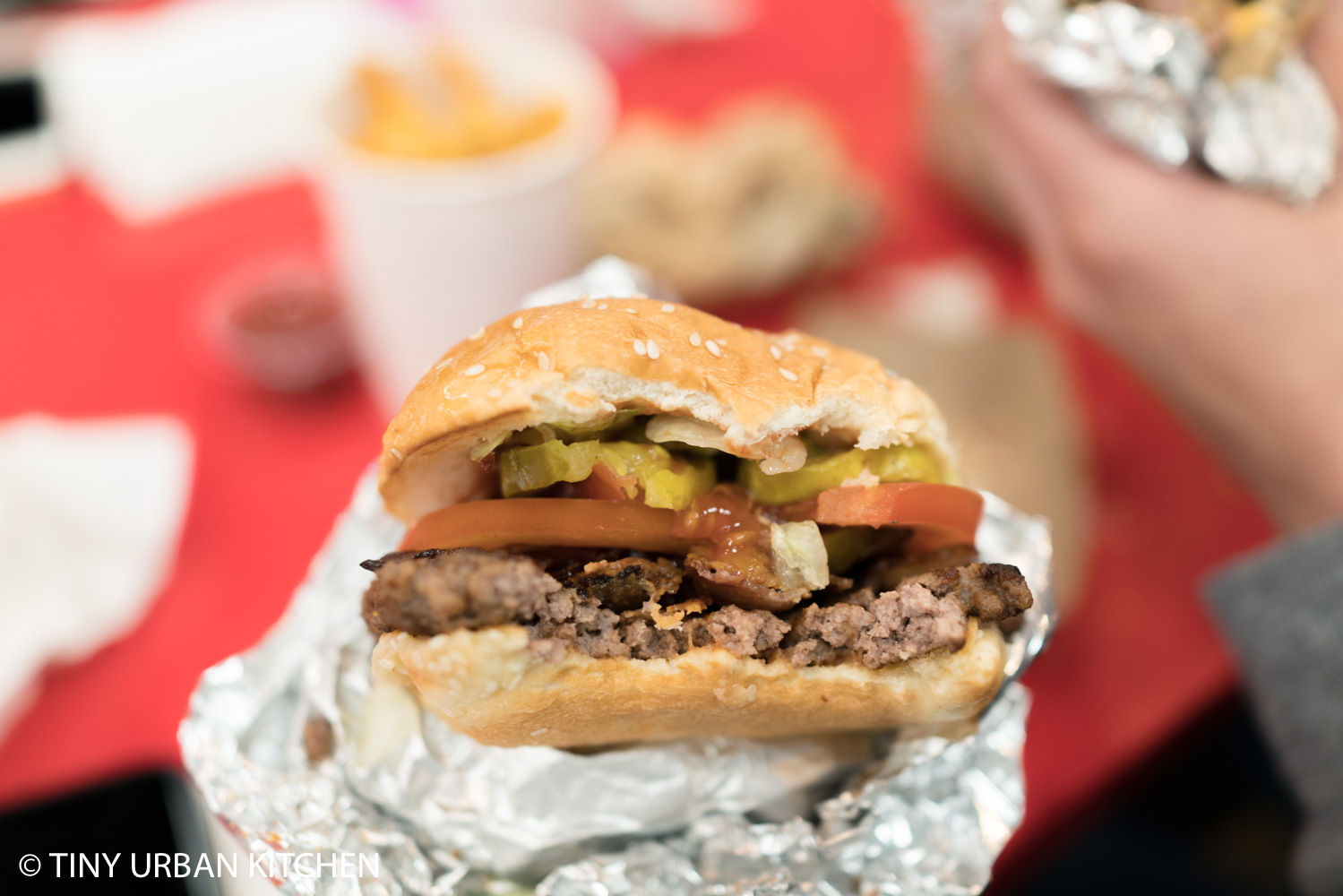
[…] Kin’s Kitchen (Hong Kong) Mercedes Me Brunch (European) Kwan Kee Bamboo Noodle (Hong Kong) Old Bailey (Jiangnan, China cuisine) Saravanaa Bhavan (Indian) Mott32 (Peking duck) ICHU (Peruvian) Tsukiji […]